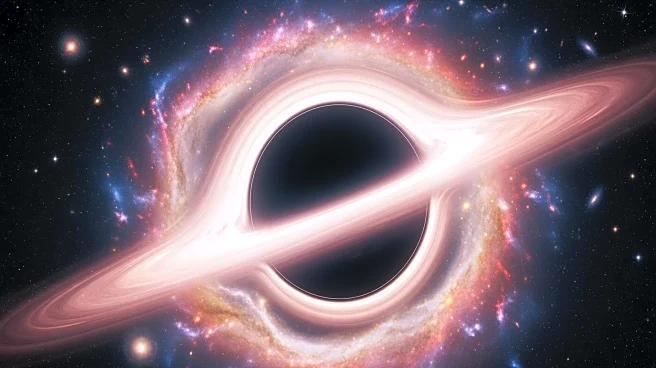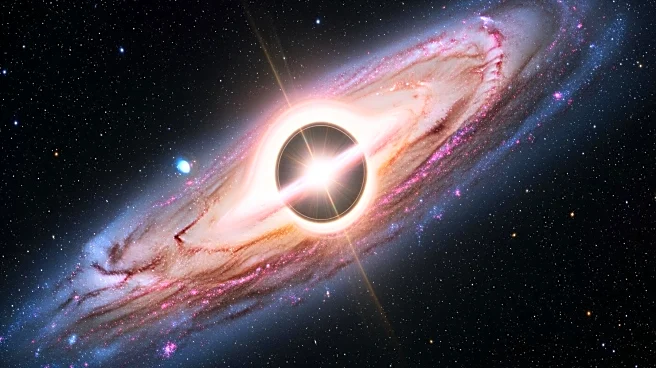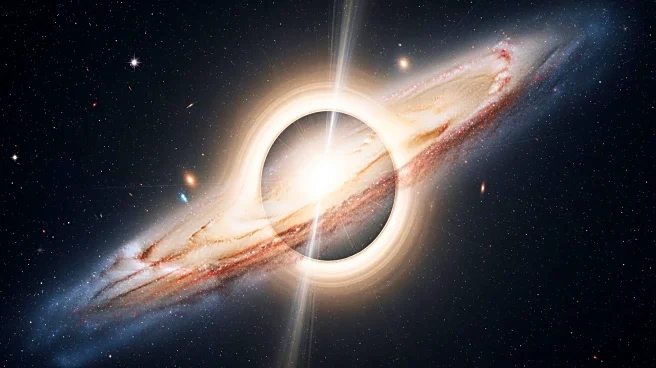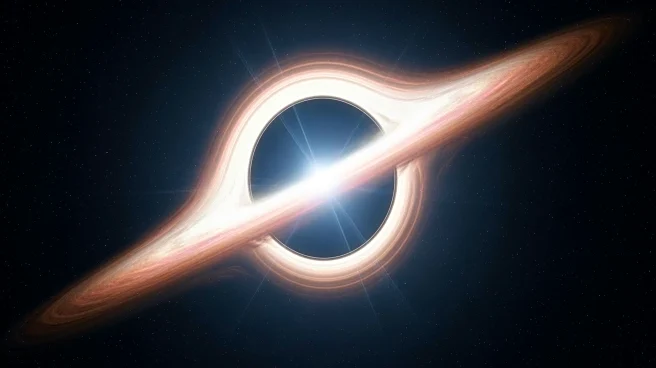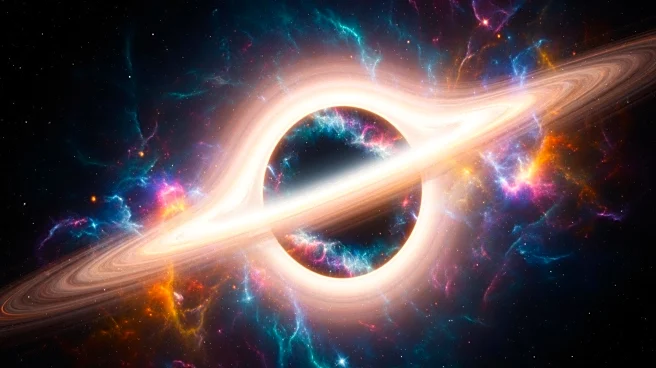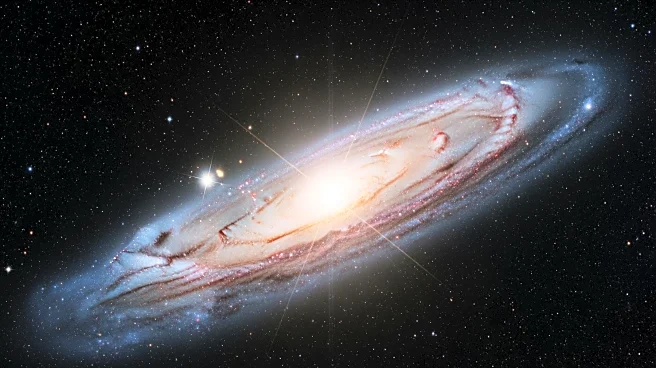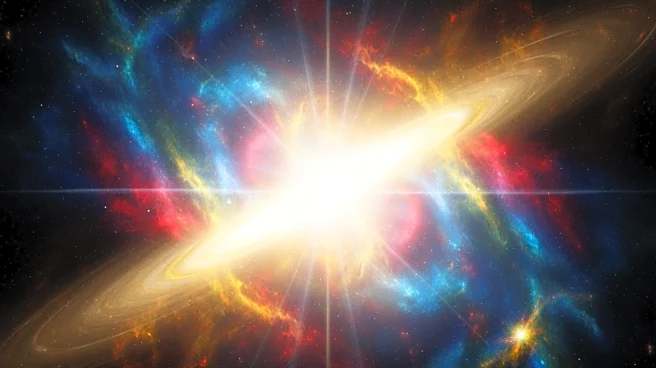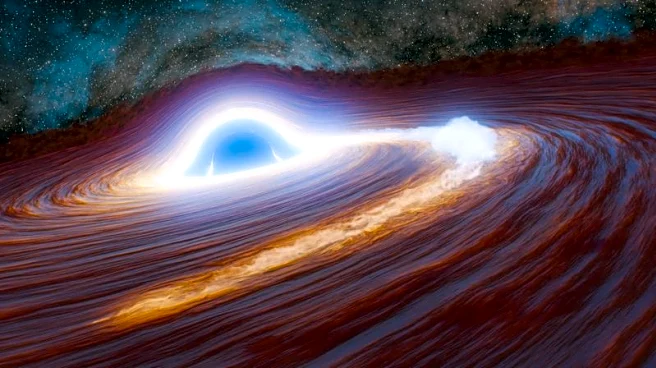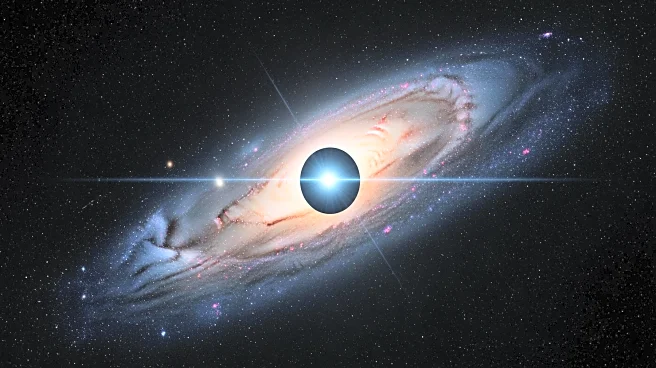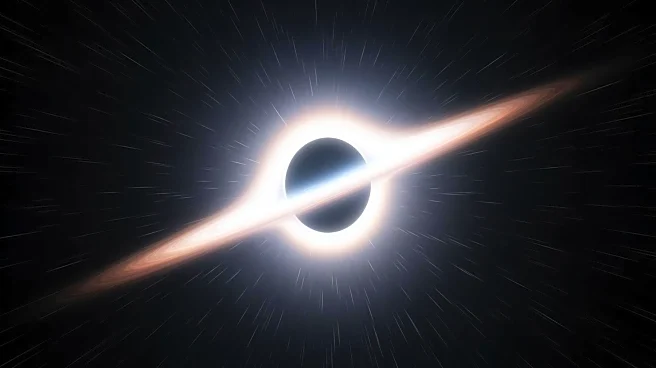What's Happening?
Astronomers have detected the largest and most distant flare ever observed from a supermassive black hole, nicknamed 'Superman.' This flare originated 10 billion light-years from Earth and emitted light with
the brightness of 10 trillion suns. The flare is powered by a supermassive black hole actively consuming material, likely a massive star, which resulted in a tidal disruption event. This phenomenon is rare, with only about 1 in 10,000 active galactic nuclei showing flaring activity, and this particular event is considered a 1 in a million occurrence. The flare was first detected by the Catalina Real-Time Transient Survey and the Zwicky Transient Facility in 2018, and further observations revealed its unprecedented luminosity.
Why It's Important?
The observation of this flare provides significant insights into the dynamics of supermassive black holes and their interactions with surrounding stars. It suggests the presence of massive stars near the centers of large galaxies, which host these black holes. Understanding these interactions is crucial for comprehending galaxy assembly and the structure of galaxies. The flare's extreme brightness challenges existing models of black hole and star interactions, indicating a need for further research into these phenomena. This discovery opens new avenues for studying the growth of black holes and their impact on galaxy formation.
What's Next?
Astronomers will continue to monitor the flare as it fades, utilizing cosmological time dilation to observe the event at a slower pace. The ongoing study of such flares may lead to the identification of more rare events, enhancing our understanding of supermassive black holes and their environments. Future observations with new telescopes, like the Vera C. Rubin Observatory, could reveal more about these dynamic cosmic interactions and contribute to the development of new models for galaxy formation and evolution.
Beyond the Headlines
This discovery highlights the complex interactions between supermassive black holes and massive stars, offering a glimpse into the extreme physics at play in galactic centers. The flare's intensity and rarity underscore the need for advanced observational techniques and theoretical models to fully understand these cosmic phenomena. The event also emphasizes the importance of collaborative efforts in astronomy to uncover the mysteries of the universe.
